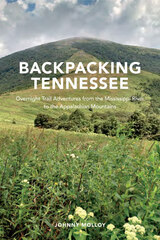
From one of the region’s foremost mushroom hunters—Walter E. Sturgeon—comes a long-overdue field guide to finding and identifying the mushrooms and fleshy fungi found in the Appalachian mountains from Canada to Georgia. Edibility and toxicity, habitat, ecology, and detailed diagnostic features of the disparate forms they take throughout their life cycles are all included, enabling the reader to identify species without the use of a microscope or chemicals.
Appalachian Mushrooms is unparalleled in its accuracy and currency, from its detailed photographs to descriptions based on the most advanced classification information available, including recent DNA studies that have upended some mushrooms’ previously accepted taxonomies. Sturgeon celebrates more than 400 species in all their diversity, beauty, and scientific interest, going beyond the expected specimens to include uncommon ones and those that are indigenous to the Appalachian region.
This guide is destined to be an indispensable authority on the subject for everyone from beginning hobbyists to trained experts, throughout Appalachia and beyond.

“The reason I travel and explore the outdoors is simple,” writes Johnny Molloy, “the world is a beautiful place!” And Molloy would know: he has backpacked more than 2,500 nights in forty states. It is this experience—much of it garnered in his home state of Tennessee—combined with his extensive production of guidebooks spanning activities from hiking and camping to paddling and bicycling, that enabled him to produce Backpacking Tennessee: Overnight Trail Adventures from the Mississippi River to the Appalachian Mountains.
Complete with directions, distances, descriptions, and maps, Backpacking Tennessee is divided into four sections that together outline forty overnight hikes across West Tennessee, Middle Tennessee, the Cumberland Plateau, and East Tennessee and the Appalachian Mountains. The trails Molloy has chosen to highlight are a mix of well-known hikes and lesser-known areas, ranging in distance and difficulty for both novice hikers and experienced backpackers. Woven throughout the trail descriptions are comments on scenery, notes about safety, and historical information that help readers get a true feel for each hike. To round out his comprehensive guide, Molloy also includes ratings, 1–5, on the family- and dog-friendliness of each trail—an especially helpful feature for readers bringing loved ones along.
From the Great Smoky Mountains National Park and Cherokee National Forest to Big South Fork and Land Between the Lakes, Tennessee offers thousands of miles of trails for adventurers looking to explore. For budding outdoor enthusiasts and experienced backpackers alike, Backpacking Tennessee answers the timeless question: where do we go next?

READERS
Browse our collection.
PUBLISHERS
See BiblioVault's publisher services.
STUDENT SERVICES
Files for college accessibility offices.
UChicago Accessibility Resources
home | accessibility | search | about | contact us
BiblioVault ® 2001 - 2024
The University of Chicago Press









